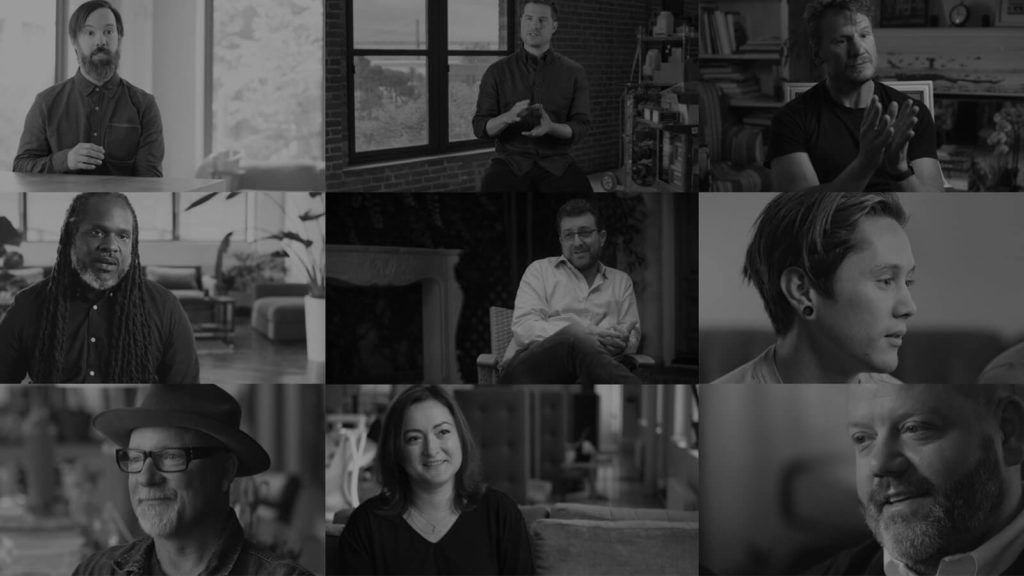Karim Marucchi, CEO, joins the Digital Transformation Podcast with Kevin Craine, to talk Open Source Software & Digital Transformation.
Podcast Overview:
In this podcast, Karim shares his experience and success when pairing Open Source Software & Digital Transformation. By leveraging the benefits of Open Source, Crowd Favorite has been serving clients of all sizes through their digital transformation journeys. Karim showcases just how adaptable and scalable Open Source solutions are when combined with any MarComm technology.

Looking for an Open Source Digital Solution?
Let’s chat about your project today.
Open Source Software & Digital Transformation Podcast Transcript
Kevin Craine: Welcome to the Digital Transformation Podcast – interviews with best selling innovative thought leaders and top shelf executives, all driving today’s digital success. This is the show that will help you take advantage of digital transformation to build your business and career. I’m your host, Kevin Craine. And I’m so pleased that you’re listening.
Our guest today is Karim Marucchi. Karim is the CEO of Crowd Favorite, a client services firm, specializing in digital strategy and Open Source development. He is an expert in digital strategies, design, and helping enterprise organizations successfully integrate Open Source into more impactful digital transformation strategies.
So Karim, welcome to the show. Now, Open Source Software development is the process by which Open Source Software whose code is publicly available is developed into working applications and systems. And you started Crowd Favorite in order to help organizations do that. What are the benefits of Open Source development for organizations today?
Karim Marucchi: Today, what we’re finding is that the conversation is shifting. In the last 10 years, it was all about will Open Source have the security and will Open Source have the scalability to be able to help the organization. When you have all these platforms out there that are not Open Source and saying, we’re the only ones that can do things securely. We’re the only ones that can do things in a scalable way.
Well, that’s been solved. I can sit here all day and give you examples of how today Open Source is actually scalable and secure. What’s interesting and what organizations today are looking at is there’s a new in Vogue comment talking about composable solutions.
We’ve been doing that in Open Source for 25 years. The concept, as you said, behind Open Source is to be able to bring together these different ideas and to work together with different project applications and different libraries. So Open Source does two things very well. Giving its community the luxury of choice – options, avoiding lock in to one platform or lock in to one idea, one road of solving a problem.
And the second thing it does well is speed of iteration. When you look at things, like for instance, the WordPress project, it has over 60,000 plugins in its ecosphere. Think about how quickly you can install something and keep things going. You have more enterprise centric plugins, and you have plugins that are there for some, some smaller websites that are trying to do SMB work.
So, Open Source really is something that should be looked at into how you can solve problems quickly and how you can keep your options open.
Kevin Craine: Do you feel that Open Source is gaining steam as a digital transformation trend that enterprises and all organizations really must be in front of as we head into 2022?
Karim Marucchi: Absolutely. More than ever. I mean, if you look at what’s happened just in the last few years. There’s that MarComm 8,000 graphic that we see online all the time. That used to be a MarComm 500. Now there’s over 8,000 companies, SaaS, closed source, Open Source. There’s over 8,000 companies out there that are saying we can help you with marketing communications technology.
How can we do that? Open Source lets you tie together the best of breed. It lets you say, I’m not going to go into one solution that is an end all be all, and lock myself into one road. I can use the best email, the best video option, the best outreach option and tie those together in a way that fits my custom workflow. Not just big enterprises, but median enterprises at a much lower cost can come up with complete solutions that can compete with some full tier solutions that are out of their price range by bringing together some of these SaaS solutions and MarComm solutions through Open Source as a hub, I like to call it.
Kevin Craine: So if I’m an enterprise leader and I’m looking to pursue Open Source, more ardently in our tech strategies, what are the top things that I need to know about Open Source that I should be considering today? You mentioned security, cost, time to market – all of that – but, what are the things that I need to consider as I convince the rest of my organization that this is a direction we should be following?
Don’t think of Open Source as a technology. Think of it as a way to bring together your marketing and your customer service.
– Karim Marucchi
Karim Marucchi: Right. I know we’re talking about technology, Kevin, but I’d like to take a step back and say, if I’m a leader in an organization, whether it’s in technology, or marketing, or executive leadership. Don’t think of Open Source as a technology. Think of it as a way to bring together your marketing and your customer service.
If you think about it, we spent the last century where marketing and customer service were two different things. Advertising and marketing were on one side of the house and dealing with your customers was something you did later. Once you got them. MarComm marketing technology, everything that’s going on with digital experience platforms and agile CMS, it’s letting us bring those things together.
So an enterprise leader should be thinking, how do I bring those things together and still stay competitive. And how do I do that quickly and iteratively without letting costs run away?. Well, Open Source is a vehicle. It’s a genre of software. It’s not one particular software, but it’s a way that you can make sure to keep your options open.
Kevin Craine: Can you give us an example of a use case or an organization that has been successful in bringing together marketing and customer service using Open Source? What did they do and what were the results and how can we do it too?
Karim Marucchi: Absolutely. We’ve worked with some of the world’s largest media companies, for instance, and we’re able to bring together systems where they were using something as simple as WordPress as a content management system to go out there and do just straight marketing to their consumers. But, then they would build on that and create, sort of portals and areas where their customers, once they’d been brought into the system, they were pulling information from their retail stores, from your fan club, from different places you’ve logged in within their systems to give you customized content.
So that’s where you start talking about customized content and personalization. When we talk about, you know, the technical term, these days is conditional content, but really personalizing the experience for your customers. Not being – I’m gonna be blunt – creepy about it, not coming in and reading their cookies off of other websites, but information they’ve given you. Information that they’ve said, I want you to know me better, to serve me better and give me what I want. Especially with generation Z and alpha, and what’s coming up in the future now. What’s going on is customers want not just a customized experience, but they want to be able to feel like you’re giving them not just your products, but your products and how it relates to them.
Need the best in Personalization?
Level up your campaigns with DXP ToolKit!
And by tying out through APIs, through tying into different legacy systems on the enterprise, or if you’re a smaller company, a medium size company, tying your email marketing and your click through to your website and then video outreach and other things. Bringing those stats together, seeing those points of engagement. You’re able to say to your customers, we see you, we hear you, and this is what you’ve said you’re interested in because they’re willing to give you that information.
Kevin Craine: We are speaking with Karim Marucchi. Karim is CEO of Crowd Favorite, a firm specializing in digital strategy and Open Source development. You can find him and find out more at crowdfavorite.com. Now Karim, information is what we’re talking about here. Data, it’s the currency of business today, whether you’re a large enterprise or a smaller startup and cashing in often revolves around that data and who owns that data. What is the role of data ownership in the future of business and how does Open Source Software fit in?
Karim Marucchi: We see a lot of trends that start with some of our larger enterprise clients. And then we see that it sort of filters down towards the medium enterprise and then eventually small business. And one of the things that’s been most powerful is this idea of data ownership. Some of our largest clients have said for years, we don’t want the information that we’re gathering to be sitting out there on third party systems. We wanna be able to keep that private. We want that to stay within our tent. So they’re working with Open Source systems and they’re working with even some SaaS vendors out there who are willing to parse off and keep their data private to mitigate the risk of it getting out there.
Data security for the consumer, for the end user is very important these days. You want to be able to say to your customers that you are taking it seriously, not just that you’re not gonna send them email or sell email lists, but you’re also going to keep it private and not let it sit out there on somebody else’s server. The idea of it being under one umbrella is becoming more and more important.
Kevin Craine: How do that though? I mean, in these days of cloud services, open data, open software, we are treading this line, this line between having personalized experience and sort of a modern experience customer wise, data wise, but also protecting privacy and so forth. How do we effectively do that? That balancing act?
Karim Marucchi: So in this instance, we’re not talking about the security of one particular server. We’re actually talking about the security of how many other organizations have access to that data when you’re collecting it. So, one of the ways that we work with our clients to do that is we say, yes, we can use service X or Y to go out there and crunch certain data, but how do we anonymize it while it’s outside of your servers?
So that you’re keeping the data to yourself as a company and as an organization. So that way, if there was a breach at that third party service, or there’s a problem with anything that’s outside of your direct control, you’re not just a victim of it. So there’s interesting technology being developed right now around how to let SaaS do its efficient job of crunching things offline and away from your servers to keep your servers humming well, but yet keep the data local and some of the best SaaS services out there today will let you have a local data store and they’re coming in doing their crunching, but they’re doing it through an anonymized layer.
Kevin Craine: You mentioned smaller businesses. And, and I’d like to ask a little bit about how Open Source Software development can level the playing field for smaller players and maybe have them, give them the ability to outcompete their larger competitors. Do you have any advice for smaller organizations, how they can gain that advantage?
Karim Marucchi: I love that question, Kevin. Thank you. I get this a lot when I’m out there speaking. And one of the things I talk about is the fact that, even as little as two years ago, if you wanted to have conditional content, if you wanted to have, deep personalization and, progressive profiling, you could only go to Adobe or Sitecore as a content management system. You would have to spend five or six figures per year on licensing, plus all the costs of development and upkeep. That was the reality. Today you can literally use WordPress and free plugins, or if you’re more concerned with security, some very cheap plugins for literally hundreds or just a couple of thousand dollars a year, you can actually do the same types of data crunching that are out there with these large CMS systems. So you can have somebody who is a small Independent maker of athletic footwear put up a website that has the same features as nike.com.
Kevin Craine: That doesn’t bode well for the large enterprise solution providers, does it? Do you think the cat’s out of the bag?
Karim Marucchi: Well, this has been a question we’ve been facing for the last 25 years ever since we started playing with the internet, and I think the Nikes of this world, the large enterprises will always have the advantage because they have the budget and the forethought. They’re playing with AI today, where we’re just getting our hands at the smaller level. We’re just getting our hands at open AI systems that we can play with, but it’s still very expensive to get a good system to really play with that.
And, what they’re doing today in trying to use artificial intelligence in the next year or two, we’ll be able to bring to the medium enterprise and then the small enterprise. Right? So there’s this constant cycle that they’re iterating and then the medium enterprise and the smaller enterprise are benefiting as this comes sort of downstream, because as it’s built for the large enterprise client, we’re finding, especially if they’re using Open Source, we’re finding ways to optimize it, make it easier to use for that smaller enterprise.
Kevin Craine: This is an exciting conversation because often our listeners comment that it can be difficult to translate the notion or the promise of digital transformation into real world applications and achievements that move the needle. What is your advice, Karim, to overcome that gap? What digital transfer transformation efforts should we target that will make a difference?
Karim Marucchi: Well, no matter who you’re gonna speak to today, if you’re in the position of asking somebody that exact question, whether it’s an agency or a product, think of it this way. If today you invited somebody into your home to do a home renovation. You don’t wanna hear what kind of features they have on their skill saw or their drill. You don’t wanna hear about which shovel they’re gonna use. You just wanna know it’s gonna be built well and what you’re gonna get out of it.
You know, am I gonna have a place to put my TV that’s bigger than the one I have now. So, no matter how they’re talking to you about their features, always bring the conversation back around to how are you gonna solve my problem? How does this work into my way of working with my process? Every organization out there from the largest enterprise to the small 50 person enterprise out there, they have the same problem of how do I adjust my process to technology? The answer is don’t adjust your process to the technology. Talk to people who want to adjust the technology to your process.
Kevin Craine: We have been speaking to Karim Marucchi. Karim is with Crowd Favorite and an expert in helping organizations successfully integrate Open Source into more impactful digital transformation strategies. You can find him and find out more at CrowdFavorite.com. Karim, we have reached the action item round of the show. I’m wondering if you could please provide us with three quick action items that our listeners can do to begin to take advantage of your ideas and advice.
Karim Marucchi: Absolutely. Number one, if today you’re on a small CMS, or you’re on a small all in one system, look to see what those limitations are. Think about if you could build it from scratch forgetting technology, what are the functions you need? Because most likely with using Open Source as a hub and looking at what’s available in some of the SaaS systems that are out there, you can solve that. That’s the first thing.
Number two. Don’t think Open Source versus SaaS (software as a service), they actually work very well together. We always talk about a hub and bespoke solution. If you’re keeping Open Source as a hub, you can branch out to any of those SaaS systems out there without having to think about re-platform or how do I churn away from a platform if you outgrow it.
Lastly, consider the partners for integration. No matter how brilliant your team is internally, talk to somebody who has expertise in varied Open Source projects, not just us, anybody, because it’s important to understand that just because somebody knows your industry or knows a particular piece of software doesn’t mean they’re experts at solving larger process problems. Look for an organization that is an expert with helping process problems. We do try to do that, but that’s really what’s key out there. Don’t look for technology. Look for the solution.
Kevin Craine: Well Karim, it’s been great speaking with you today. We’re almost out of time, but before I let you go, one last question. What should CIOs, executives, business owners be thinking about now, and strategizing for today in order to be prepared for the world in five years time?
Karim Marucchi: I think an idea that’s catching on hopefully quickly today is, not to just look at those business processes, but really at the very beginning, when you start thinking there might be a technology out there that helps me solve a problem, is looking at the team you have. Looking at whether you’re a solo-preneur or whether you have a team of 5, 50 or 500. Think about the human process, the human aspect of how to bring the people that you’re gonna actually work on this day-to-day together with those technologies. Too many times, I have people come to us and say, here’s a solution that has this list of benefits. That’s why we want to use it. And if I ask them, even the first benefit on the list. How is that gonna play into how you’re working now? They’re like, well, I don’t know. It just says it’s gonna solve it. Think about how the human aspect is of how you’re gonna work with that technology.
Kevin Craine: That is Karim Marucchi with Crowd Favorite. Karim, thank you so much for being our guest today on the digital transformation podcast.
Karim Marucchi: Thank you, Kevin. It’s been fun.
Let’s Work Together
Crowd Favorite works with larger Fortune 500 organizations to create what they need to fix their digital problems. On a deeper level, we help with integrating digital business needs and can address everything from streamlining workflow issues to improving client experiences. Let us help solve your digital problems.
Podcast Feature
Open Source Software & Digital Transformation with Karim Marucchi, CEO of Crowd Favorite was originally broadcast by The Digital Transformation Podcast
Crowd Favorite in the Media
Start a Project
We have the experience and commitment to provide a human-centered focus to ensure delivery of optimal, digital solutions for you and your customers. Our team is ready to help.







